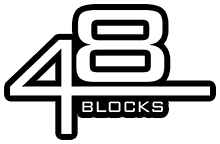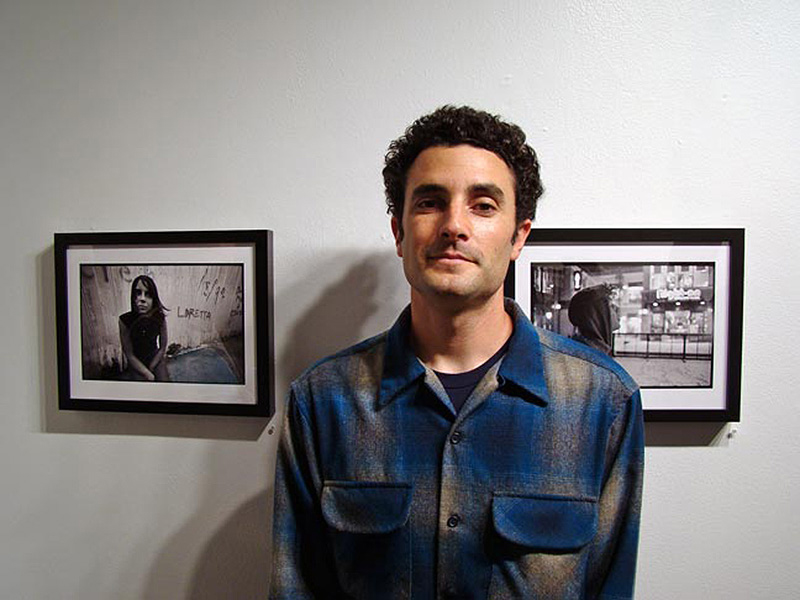Mark Whiteley has been the editor-in-chief at SLAP for over a decade, and has played a major role in keeping the mag legit throughout skateboarding’s various ups, downs, and transitional periods. He is also a talented photographer, and recently published a book of his photos with stories and reflections on his work. A proud father of two, husband, skateboarder, and decision-maker—he’s a man who juggles many roles yet maintains a composed, reflective, and caring vibe as an individual. Mark was also the person who encouraged me to write about skateboarding and published my first article in SLAP back in 2001, so it’s with great pleasure and gratitude that I present his perspectives on life and skating.
Interview & Intro by Dustin Umberger
Dustin: What were the circumstances that led to you taking over as editor of SLAP back in the late 90’s?
Mark: During high school and college I was a video filmer. I worked for 411, Think, Real, Stereo, Thrasher, Santa Cruz, etc and just got to know tons of skaters and other people in the Northern California sector of the industry through being out skating and filming. I was just about to graduate from college when Lance Dawes (the original SLAP editor) was asking around about people who might be able to come in as an assistant-type editor, do a little bit of everything, and my name came up from a few people – mainly Phil Shao and Paul Zuanich, who were two of my best friends. I met with Fausto Vitello, he liked me, Lance was into it, and I came aboard on August 10, 1998 as managing editor. Lance moved down to LA a year later and I was handed the editor-in-chief reigns then.
Dustin: What kinds of pressures and stress did you feel when you first started the job and took on the responsibility of putting out a quality mag?
Mark: At first I was just psyched to be working at my favorite mag! I wasn’t stressed at all because I just felt like I was a little piece of the puzzle. As time went by and I had to assume more responsibility I started stressing on two main fronts – 1. keeping the editorial feeling that SLAP had always had going with the right content and vibe during a time when skating was moving in a pretty blah direction, and 2. realizing that a lot of what made SLAP special to me was exactly the stuff that some of the higher-ups here wanted me to get rid of in the new post-Lance era. There was a long period where we got a lot of pressure to be more like Thrasher – be gnarlier, more fuck-you, less artsy, less experimental. So it was kind of like we were caught in the middle because all of us who worked at SLAP were there because of what the mag had seemed to us in the past, and we were getting pressure to kill a lot of that. It was a struggle for a long time, and one that nobody really won. We always did plenty of cool stuff that I was proud of every issue, but the last couple years of the print mag were when we really got to do more of what we wanted to do the whole time.
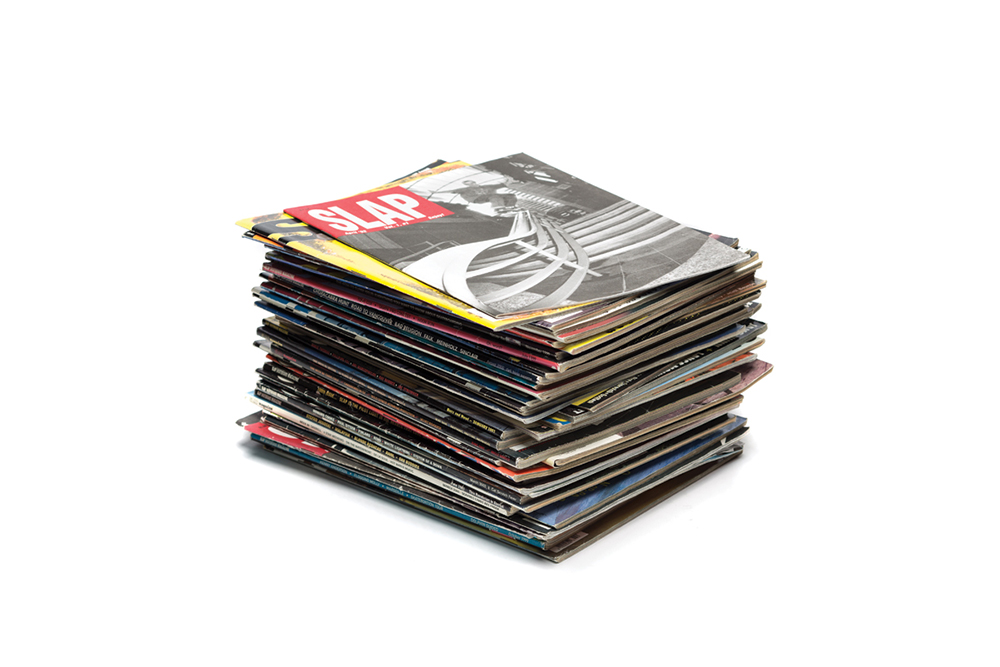
Dustin: SLAP has always had a “by skaters for skaters” kind of vibe. This is exemplified by the “One in a Million” contest series. How did that come about?
Mark: SLAP always had that vibe because it was real – everybody who worked at SLAP skated hard (except for one person during the 11 years I’ve been here). I always tried to approach everything that went into the mag from a fan’s perspective, not from an insider’s perspective. I never dug the “too cool” vibe that a lot of people had, and thought it was important to emphasize having fun and being creative over anything else. Anyhow, with OIAM, Lance and I were talking about reality TV shows, which were kind of a recent phenomenon at the time (probably sometime in 2003) with stuff like Survivor being new and big, and how there should be something like that for skating. From there I just fleshed out the idea to what it was the first couple years we did it. It’s grown a lot in scope over the years, and the one we just did, which will be released starting in December as multiple video episodes, is by far the most involved yet. But basically the idea is simple: everybody has that dude or those couple guys in their town who everybody says should be sponsored or is as good as the pros – we want to see them. We want to see all the guys who destroy but wouldn’t otherwise have a real shot at getting in the skate limelight mix, and give them a little springboard into that world. Some of the guys who have won have stuck around in the sponsored skate world, like Jake Donnelly and Kevin Coakley, some are still killing it but struggling like Curtis Rapp, who is amazing. Some have gone on to do other things, like Erik Ostos. But it’s really about the process of the contest, and exposing all these cool skaters to the greater world, regardless of what happens from there.
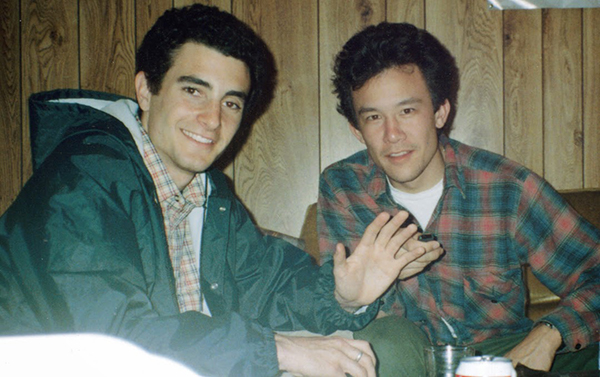 Dustin: The SLAP message board has become an important forum for skaters to discuss their interests, but the prevailing attitude towards message boards seems to be that it’s a cesspool of trash-talkers and rumor-spreaders. What’s your feeling about this phenomenon?
Dustin: The SLAP message board has become an important forum for skaters to discuss their interests, but the prevailing attitude towards message boards seems to be that it’s a cesspool of trash-talkers and rumor-spreaders. What’s your feeling about this phenomenon?
Mark: Before we went all online my opinion was that the forum was filled with trash-talking idiots who caused a lot of headaches for people, myself included, and that I was bummed to have the SLAP name associated with that cesspool rep. I would watch from afar and not get in the mix on there – partially because I didn’t want to acknowledge it fully, and partially because it seemed scary to deal with the people on there, or at least what I thought they would be. When the online change came around and I realized that this is really the audience for what we’re going to do, I dove in head first and tried to get to know everybody and see what was really going on. What I found is that yes, there is definitely a lot of trash talking, but that there are also a lot of really smart, caring, thoughtful and dedicated people on there who are often telling it like it is, and I respect that immensely. There are plenty of loud-mouth idiots, but that’s just life. I think what the forum really is is simply the skate shop environment on a massive scale. You’ve got the dumb new kids who don’t know anything but want to be cool, the young kids who think they know everything already, the humble kids who just want to rip and be around cool stuff, the older guys who offer a wider perspective and help keep people in check. I know there are plenty of people who trip out on and are offended by some of the things that the SLAP forum discusses. But what I think is important to remember is that the sentiments on the forum are spoken everywhere in the world. It just didn’t have the place to be heard on a wide scale until recently. It’s a good place to exchange ideas and opinions, bottom line.
Dustin: SLAP was the first and remains the only major American skate mag to go completely digital. What was your role in this decision, and how has the transition impacted the SLAP office in terms of finances and readership?
Mark: To be totally honest, it was pretty much sprung on us in the editorial side of things. That said, despite missing the monthly mag, it was the right decision for the company. The economy was just really starting to hurt, people’s budgets were drying up, and being a smaller mag we weren’t at the top of the priority list for people to spend their ad dollars, so our ad revenue was dropping. Our sales had actually been going up a decent amount the last few years of the print mag, I think as a result of being able to return to making the mag as we had always wanted to be making it, but subscriptions actually lose money for the mag and news stand sales don’t generate nearly as much as ad revenue, so without that level of ad revenue it wasn’t going to last too long the way things were going because at the same time the price of paper went up, the price of postage went up, the price of gas went up – all major things that effect the bottom line when you’re printing and distributing magazines on a massive scale. So all of a sudden things were just out of whack financially. What everybody realized is that we had this huge audience already built in through our website forum, so why not just totally focus on them and feed this community we already had right in front of us? It only made sense. Cutting out the costs of printing and distributing lowered our overhead considerably, and the website format opened up our creative options as well, with video and audio and all that – and we could offer it all for free. So, as far as finances our ad revenue is lower than it was in the print mag, but the overhead is lower as well, so we are making some money now instead of losing money as it was towards the end of the print mag. In regards to readership, We were printing about 50,000 mags per month the last few issues. Last month we had about 215,000 unique visitors who came to the site. So theoretically our audience is about four times as large now, and that amount has literally doubled since last December when we first went all online, which is a real good sign. In the end I really do think that a lot of monthly mags will be going into a largely digital format and I’m glad that we did it first in skateboarding – it’s uncharted territory, there’s nothing to compare it to, and there’s something to be said for the pioneer spirit, regardless of what follows.
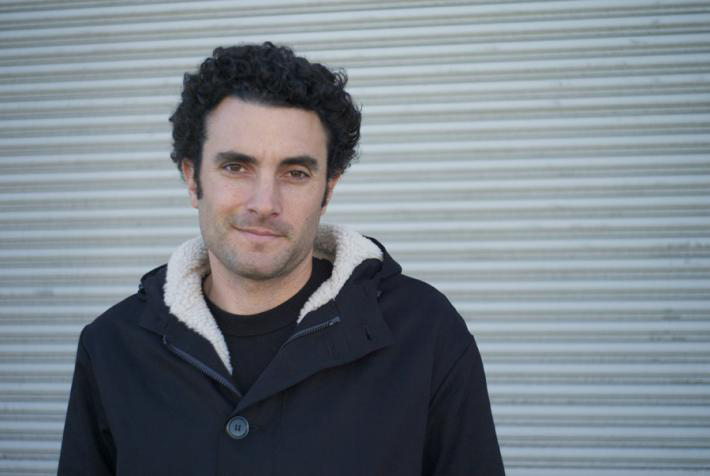 Dustin: Paying for skateboard media, especially videos, seems to have become a thing of the past for many skaters. From your perspective, how has downloading frustrated the efforts of companies to produce and market high-quality skate media?
Dustin: Paying for skateboard media, especially videos, seems to have become a thing of the past for many skaters. From your perspective, how has downloading frustrated the efforts of companies to produce and market high-quality skate media?
Mark: Ideally what I think should happen for established skate media outlets, meaning videos and magazines, is this: the day-to-day stuff gets put out via the web for free. You get your little articles, your tour videos, your b-footy, etc for free, and on a regular basis, and you also get your interactivity between skaters and companies there as well. Then, the best stuff gets saved for either the big video or a meaningful print object – like a quarterly or annual mag or book, and that’s the stuff that gets put out for sale. That scenario supposes that skaters are willing to buy these bigger objects and not share them with everybody on the web, and that’s asking a lot, but that’s my ideal scenario. I hope we can get to that point because I think everybody wins there – the skaters get cool stuff day to day but the best stuff retains a quality of being special and impactful in a way that the web format right now doesn’t really bestow. The companies create a demand for the best output and also get to put all the secondary stuff to use too, which helps get the sponsored skaters more widely known. We at SLAP are working on a book right now of the best photos from the past year because I think they need to get there due in a nice print format, to really show people the awesome stuff that we’ve put out in a format that they can hold on to in a physical way. I think that will help balance out our heavy web presence.
Dustin: As a frequent visitor to the SLAP office, I’ve seen how demanding and time-consuming your job seems to be most of the time. How much time do you allow yourself to skate for fun these days?
Mark: See below, but not a ton. With the new warehouse spot right across the street I’m hoping to sneak in more quick sessions on a regular basis. I’ve never been one for parks though, and I get almost everything I need from skating on a quick zip-zinger ride to the store. Give me some curb cuts, some sidewalk bumps, a nice smooth parking lot, and I’m good.
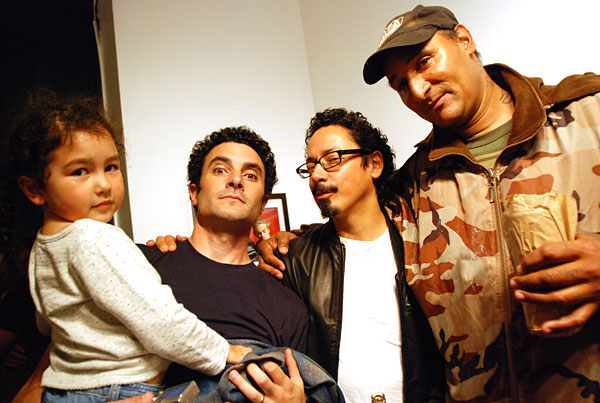 Dustin: As a family man, do you find it to be more of a challenge to balance being a skater with the real-world responsibilities of adulthood and fatherhood?
Dustin: As a family man, do you find it to be more of a challenge to balance being a skater with the real-world responsibilities of adulthood and fatherhood?
Mark: I’m at a point in my life where my priorities have changed considerably from where they were even five years ago. I’ve got two kids, my wife works Saturdays so I’m with my kids all day then, my office time is pretty heavy, and so I’m not out skating even half as much as I used to. The first couple months all this was in place was tough because I was so used to my schedule the way it had been for so long – being out skating and shooting pretty much whenever I wanted, but eventually I realized that this was just a new chapter for me and my priority is my family and my skate time will come when it comes. Since then I’ve felt better about it, although I’m still not passed the thing where when I go out to skate I think I’m still at a certain level but I’m not actually there because I’m just not doing it enough, so I get frustrated that I can’t do what I think I should be able to do. I’m trying to make an effort mentally to just enjoy whatever happens when I do get to skate and not stress on sucking at f/s half-cab flips now, but it’s hard to put that in place when for 25 years I’ve been trying to get ‘er done when I go out to roll.
Dustin: What’s next for SLAP? Are there any major developments in the works? How do you see the next five years panning out for the mag?
Mark: SLAP has always been an on-the-fly operation. I don’t know if that will change with the new web format, but we’ve got a certain balance between planning for some things and not planning at all for others that allows us some flexibility in being able to do weird or spontaneous things. I hope to keep that while at the same time figuring out some long-term goals for what we want to do and how we are going to define what SLAP is and represents in the coming years. It’s a new era and we’re building as we go.
Dustin: You just published a book of your photos. Could you tell us a bit about the project and how it came into fruition? Where can we pick up a copy?
Mark: I’ve been shooting photos since I was a kid, majored in art at college, and always thought how cool it would be to have my own book out. A couple years ago I came across this website called blurb that was a self-publish site where you could make your own books, and I thought it would be fun to make one through there since the chances of having a real one were pretty much null. So I started getting stuff scanned slowly, making little paper print outs of the photos, arranging 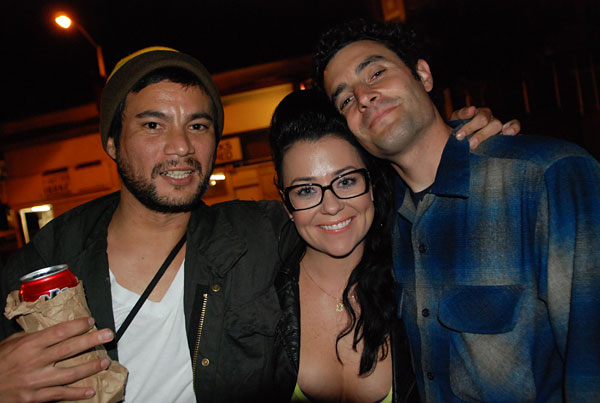 them on the floor of my living room at night, just slowly building my own little book. Eventually I got it all together and made like 25 copies through blurb, gave them to friends and family, sold a few but mostly just did it for fun. I sent one to this guy David Lopes at Gingko Press who I knew just via email from having done reviews on some of their books in SLAP over the years. He got it, let me know he thought it was good and would hit me back if there was anything they could do with it down the road. I didn’t hear anything for a year and had totally written it off until one day out of the blue while I was out skating he called me and said they wanted to put the book out. I was driving my car at the time and almost crashed when I heard that. So basically I got to revise the book, drop some photos out, add in about 20 new ones from the year or two since I had made the DIY version, got Craig Stecyk to write me an intro, added this whole section in the back with little stories about what was happening when I shot each photo, got it laid out professionally, the whole nine. It was an amazing opportunity and I’m so completely happy and honored that it even happened. As far as where you can get it, Gingko has really good distribution all over the world but one place I know for sure to point people is SLAP – we’re helping distribute it as well, and you can get it at a discount through us as well. If you’re in SF, got get it at the Museum of Modern Art – I still can’t believe it’s in there!
them on the floor of my living room at night, just slowly building my own little book. Eventually I got it all together and made like 25 copies through blurb, gave them to friends and family, sold a few but mostly just did it for fun. I sent one to this guy David Lopes at Gingko Press who I knew just via email from having done reviews on some of their books in SLAP over the years. He got it, let me know he thought it was good and would hit me back if there was anything they could do with it down the road. I didn’t hear anything for a year and had totally written it off until one day out of the blue while I was out skating he called me and said they wanted to put the book out. I was driving my car at the time and almost crashed when I heard that. So basically I got to revise the book, drop some photos out, add in about 20 new ones from the year or two since I had made the DIY version, got Craig Stecyk to write me an intro, added this whole section in the back with little stories about what was happening when I shot each photo, got it laid out professionally, the whole nine. It was an amazing opportunity and I’m so completely happy and honored that it even happened. As far as where you can get it, Gingko has really good distribution all over the world but one place I know for sure to point people is SLAP – we’re helping distribute it as well, and you can get it at a discount through us as well. If you’re in SF, got get it at the Museum of Modern Art – I still can’t believe it’s in there!
Dustin: On a final and personal note, who helped you to develop your low-key, reflective personality and the confidence to run the show over at SLAP? Are there any people you’d like to recognize who’ve been especially influential to you as a professional and as a person?
Mark: Wow. I guess a lot of my personality is due to my parents. They’re both very much the things you say I am. Obviously I owe them a lot as we all owe our parents, but they put a skateboard under my feet, a camera in my hand and music in my ears from an early age and were always behind me with all my interests. I’m also an only child and spent a lot of time in my head growing up, and I think that has a lot to do with how I think and who I am. As far as my role at SLAP, I guess Fausto Vitello and Lance Dawes thinking I was good enough to do the job made me think I could do it without even really thinking about it. From there I just jumped in and did my best to swim. I also owe a ton to Joe Brook for being my partner at SLAP for all these years – I couldn’t have done it without you Joe Joe. I think we’ve made a pretty good team through it all. Most of all I think I am who I am because of all the people and things I have been exposed to from skateboarding. If you skate, you already know how much we get shaped by all the parts of what we do, but it’s pretty profound when you get the perspective to see how much impact it really has. It’s strange to think how much of a different person I would probably be without a skateboard coming into my life. Fate delivered on that one.
